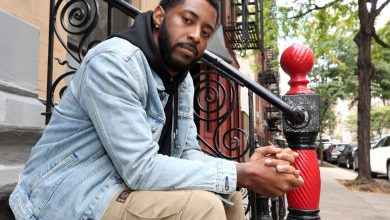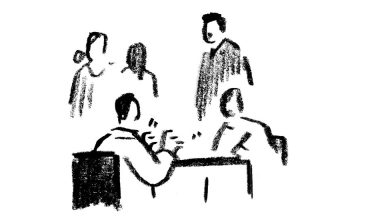Paul Newman, Joanne Woodward and the Perils of the Power Couple

Like Harlem in the 1930s or Greenwich Village in the early 1960s, Manhattan’s theatrical heart midway into the 20th century was where the ground was shaking, the place where culture was being rewritten. Challenging provincialism and repression, dismantling our holy mythologies and putting down the seeds for the revolution that would bear fruit a decade later, American playwriting had acquired a stature it had not had before and held onto only briefly. At the same time, acting was also in the process of transformation, bending more aggressively toward art rather than occupation under the direction of celebrated teachers — Stella Adler, Sanford Meisner — who coaxed students toward a naturalistic emotional lability that gave us Marlon Brando screaming “Stel-la!”
A regard for realism favored the intensity of someone like Joanne Woodward, who arrived in New York from the South in 1950 at the age of 19 and kissed the ground, convinced she would become a star. Her recessive looks were as much an asset as her confidence, helping to make her believably uptown or small town, hardened or vulnerable, cold or libidinal. She was by no means a type. Paul Newman, to whom she was introduced in the office of a talent agent, looked like something else entirely, and for her the feeling was distaste at first site.
As we discover in “The Last Movie Stars,” HBO’s six-part documentary about the couple’s long, enviable, thorny life together, the young actor struck her as someone “kept on ice.” Woodward was ultimately the heat source that enabled the thaw. The couple fell in love — or rather into a deep well of consuming attraction — during the Broadway debut of William Inge’s “Picnic” in 1953 where they served, all too fittingly, as understudies in a play about the transgressive, liberating qualities of desire. Woodward knew she had found the man she would marry — even if he already had a wife and three children.
What happened to Woodward’s brazenness, for better or worse, the resolve and outsize ambition, is in so many ways the familiar story of modern womanhood, rooted in agonizing choices too often made by default compromise and vague negotiation that lay down the rebar for so much regret. The film comes to us from Ethan Hawke, an actor in middle age, a Brooklyn dad in loose clothing, endearingly transfixed by his subjects’ humility and endurance — artistic, political, erotic, psychic, parental. I am not sure that the actor, once the husband of Uma Thurman and now married to their children’s former nanny (a co-producer of the film), embarked on this project as a feminist analysis of power coupledom, but it is where we land in any event, as if there were no alternate route.
In the fabled world of the Actors Studio in the ’50s, Woodward stood out for her exceptional gifts of craft and Newman, in an inversion of the standard gender conventions, for a physical presence that seemed to hold him captive. Like Marilyn Monroe, he came there to study already beset by insecurities that were then aggravated in the formidable company of actors — Brando, James Dean, Geraldine Page and Karl Malden — considered the greatest of their generation.
Woodward’s career was the first to ascend. Newman was enraptured by his wife’s talent, but it turned out that she also had an ability for eliciting his. The sexual persona that seemed integral to him was by his own account his wife’s creation. Once, Newman came home to their place in Westport, Conn., to find Joanne refashioning an outbuilding in crazy colors with ad hoc furniture — a place for them, she told him, to retreat to their carnality. (The film relies on thousands of pages of transcribed interviews with Newman, his friends, family members, directors, who are given voice by prominent actors, most of whom, like Laura Linney and Bobby Cannavale, were incubated in the New York theater.) The couple’s intimacy deepened Newman, exposing what he wasn’t sure he really possessed.
Once the monument of her husband’s iconic image was finally constructed, Woodward fell into her domestic obligations. There were six children in total — the three girls the couple had together and the two daughters and a son, who died of a drug overdose in the late 1970s, that Newman shared with his first wife. Woodward was by all accounts an excellent mother, so much so that one of her stepchildren had the name “Joanne Woodward” tattooed on her forearm. Stephanie Newman, interviewed in the film, worshiped her in spite of the fact that her own mother was devastated by her father’s betrayal — not only because she had been left for someone else but because she also had wanted to become an actress. In 1958, the first Mrs. Newman was left to suffer the affront of her ex-husband’s very public new marriage and the fact that Woodward, only in her 20s, had received the Academy Award for best actress the same year.
Woodward was honored for her performance in “The Three Faces of Eve,” a film about multiple personality disorder whose subtext of maternal dissatisfaction, in hindsight, would foretell her own ambivalent relationship to family life. A frustrated housewife, Eve White develops two other identities; inhabiting one of them, she tries to strangle her daughter with a curtain pull until her husband stops her. An old interview in the documentary has Woodward confessing what no mother ever feels permitted to say: that if she had to do it all over again she is not sure she would have had children at all. The professional sacrifices had piled up too high.
I watched the episode of “The Last Movie Stars’’ in which that clip appears on the same afternoon I read about Serena Williams’s retirement. At 40, an age when we assume athletes will put away the equipment, one of the greatest tennis players of all time still felt compelled to explain her decision in the context of how fulfilling it was to be able to pick up her daughter from school.
Woodward’s admission is such a revelation not simply for its honesty but for the way it illuminates our withdrawal from deeply uncomfortable truths about motherhood toward the pretense and artifice energized by social media. In so many ways, Woodward refused to cater to expectation. Television clips from her appearances on talk shows in the ’70s and ’80s show her in high collared blouses, sometimes affixed with a broach, her hair neat and prim, explicitly Fairfield County, as if she were quietly waging war against the notion that a middle-aged woman would really have to work it to keep the attentions of the hottest man alive. Asked by Playboy magazine in the late ’60s if he was ever tempted cheat, Newman famously responded that he didn’t have to go out for hamburger when he had steak at home. The analogy enraged Woodward. Her sexuality was her own. In that way, she really was the last movie star.





